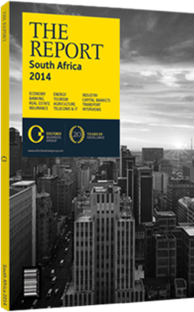After a challenging few years, the tourism sector is bouncing back
The number of foreign visitors was up in 2013, according to South Africa Tourism, the official tourism marketing body. International arrivals reached 14.8m in 2013, a 7% increase year-on-year over 2012, with tourists comprising 9.6m. Visitor numbers from outside Africa rose 7.1%, led by Asia (9.2%), Central and South America (8%), and Europe (7%). The largest non-African source market remains Europe, with 1.5m arrivals – something that has presented somewhat of a risk over the past few years given the eurozone slowdown, which has brought down consumer spending.
According to local press reports, Cape Town’s 22 five-star hotels enjoyed their best (southern hemisphere) summer season since the 2010 FIFA World Cup tournament, while a June 2013 report from PwC indicated that the average occupancy rate for three-to five-star hotels was expected to rise to 61% for the year, compared to 56.5% in 2012.
Return To Growth
The uptick in tourism comes as a relief to businesses in the sector, which has experienced some difficult times over the past few years. The country enjoyed a fillip when it hosted the World Cup, but since that event – for which a number of hotels were constructed, expanded or upgraded – business has been slower. “One of the challenges that still remains in the tourism sector is the excess capacity created from the World Cup,” Enver Duminy, CEO of Cape Town Tourism, told OBG. “However, we are emerging from the post-tournament dip and are starting to see demand slowly absorb the oversupply.”
The industry recovery should help buttress South Africa’s headline performance. The World Travel & Tourism Council (WTTC), a global industry body, estimates the sector’s direct contribution to GDP at 3% in 2013, with the overall impact – direct, indirect, and induced – standing at 9.5% of GDP. However, more importantly given the country’s unemployment problem, with an official unemployment rate of 24%, tourism is also a job-generator, accounting for almost 1.4m jobs directly and indirectly. Good news, then, that the WTTC also expects the sector’s direct GDP contribution to grow at 3.9% per year between 2014 and 2024.
Silver Lining
The country’s hotel operators may also be benefitting from the deprecation of the rand. The rand fell 19% against the dollar in 2013, the largest decline of any of the 16 major currencies tracked by Bloomberg. The weakening of the rand, which is often treated as a proxy for emerging market risk, may be bad news in many ways – driving up the cost of imports, for example. This also makes the country – already an affordable destination by developed-economy standards – cheaper for foreign tourists. Reports suggest that the biggest impact has been on the luxury travel sector, with tourists who would previously have stayed in mid-range hotels able to upgrade due to lower prices. South Africa’s reputation as a value-for-money destination has been further boosted by the perception that high-quality hotels, resorts, restaurants and trips can be accessed for relatively little money.
Business Tourism On The Rise
Much of the coverage of South African tourism focuses on the country’s strengths in the leisure segment – its scenery, good weather, wines, beaches and lively cities – but business tourism accounts for around one-third of spending in the sector, according to the WTTC. Its importance as a revenue generator derives from South Africa’s position as one of the world’s most prominent emerging economies; the fact that many global companies choose the country as the location of their regional headquarters; and the strength of its meetings, incentives, conferences and exhibitions (MICE) sector. In August 2013 the government launched the National Conventions Bureau (SANCB) to promote the segment.
“Business tourism, and specifically the MICE segment, will be a key driver for growth in South Africa’s tourism sector,” Duminy told OBG. “The SANCB has been established to enhance cooperation between our major cities, which boast convention centres that attract large-scale international events. The MICE segment can further address seasonality issues in the industry.”
You have reached the limit of premium articles you can view for free.
Choose from the options below to purchase print or digital editions of our Reports. You can also purchase a website subscription giving you unlimited access to all of our Reports online for 12 months.
If you have already purchased this Report or have a website subscription, please login to continue.

